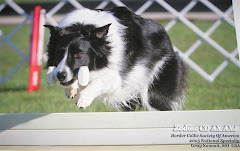Demodex
Many people present their dog to a veterinarian for evaluation of skin conditions and a fair number of these people are concerned their dog has mange. Fortunately, mange of any form is fairly uncommon relative to other skin diseases. It does however, come in two very different forms.
Both forms of mange are due to a type of mite. Today we will discuss Demodex mites or Demodicosis.
Demodex canis are normal inhabitants of canine skin. They live in small numbers deep in the hair follicles of all dogs. An overpopulation of mites is what leads to clinical disease. The mites are passed from the mother to pups in the first few days of life. The exact cause of why some dogs develop disease is not well understood but it seems clear that the immune system plays a part in keeping mites to a normal population. It would therefore stand to reason that an unknown immune defect plays a role in determining which puppies are affected. However, these dogs do not normally have any other health issues or immune dysfunction. There does however, appear to be a genetic link so dogs affected with Demodex, their siblings, and parents should not be bred.
Demodicosis occurs in two forms-localized and generalized. While there is not a distinct definition of what defines the two, localized is generally limited to one or a few small circular patches of alopecia (hair loss). These areas are frequently confined to the head and legs but sometimes also appear on the trunk. Generalized disease involved an increased number of patches that can spread all over the body. Frequently there is secondary infection with pruritis (itching), crusting, scaling, or greasiness. Demodex most commonly occurs in puppies less than one year of age but there is an adult onset form. In adult dogs with Demodex there is frequently an underlying cause including steroid use, Cushing's disease, or neoplasia. A thorough work-up should be performed in these dogs and they should continue to be monitored even if no underlying cause is found as some believe the presence of Demodex can be the first signs of another undiagnosed disease.
The diagnosis of Demodex is typically made by deep skin scraping where the mites can be found under the microscope. It would be rare to find a mite on a skin scraping of a dog with normal skin so this finding is considered diagnostic. Occasionally repeated skin scrapings do not reveal mites and a biopsy is performed in suspected cases to obtain a diagnosis.
 |
| Microscopic view of Demodex Canis |
Treatment for very localized disease is typically benign neglect or treatment of the affected areas with a topical antibacterial or follicular flushing agent-most commonly Benzoyl Peroxide. Most of these cases will resolve on their on own in 6-8 weeks especially if the puppy is free of parasites, in a non-stressed environment, and on a good plane of nutrition. If the puppy has more generalized lesions with secondary infections or is developing more lesions during the course of conservative treatment then additional therapy is needed.
Amitraz comes in a dip form (Mitaban) that is applied every 14 days and allowed to air dry. Bathing with a benzoyl peroxide shampoo prior to dipping helps with efficacy. Amitraz is also available as a spot on in the form of the flea and tick product ProMeris. This is also applied every 14 days. Lethargy is common after Mitaban dips and it needs to be applied in a well ventilated space with protective gear. For this reason they are most commonly performed in the veterinary clinic.
Ivermectin in commonly used in the treatment of Demodicosis and is frequently the treatment choice recommended by dermatologists. Ivermectin is given once daily by mouth. Because of the occasional toxicity to ivermectin at these doses a very low dose is started initially and gradually raised to the therapeutic level over several days. During this time owners should watch for lethargy, tremors, ataxia, drooling and listlessness. Ivermectin should be avoided in herding breeds including Collies, Shelties, Border Collies, and Aussies unless they have been tested for the MDR1 mutation. An alternative to Ivermectin is daily Milbemycin (Interceptor) although this is frequently cost-prohibitive. Recent studies have shown however that even Milbemycin can be toxic in collies who are homozygous for the MDR1 mutation so this treatment protocol is under further review.
Moxidectin orally has been evaluated in a few studies with good success. Side effects are similar to Ivermectin. Use of the topical formulation (Advantage Multi) has been useful applied once weekly for mild disease.
Ideally treatment should be continued for 4 weeks beyond 2 consecutive negative skin scrapings 4 weeks apart. Dogs with secondary infections are treated with appropriate long term antibiotics and shampoos. It should also be noted that once treatment has started the skin will typically look worse and be more pruritic before it gets better. This is due to the body's reaction to the dying mites.
Demodex is not contagious to humans, cats or other dogs in the household.
















































.jpg)
.jpg)



.jpg)


